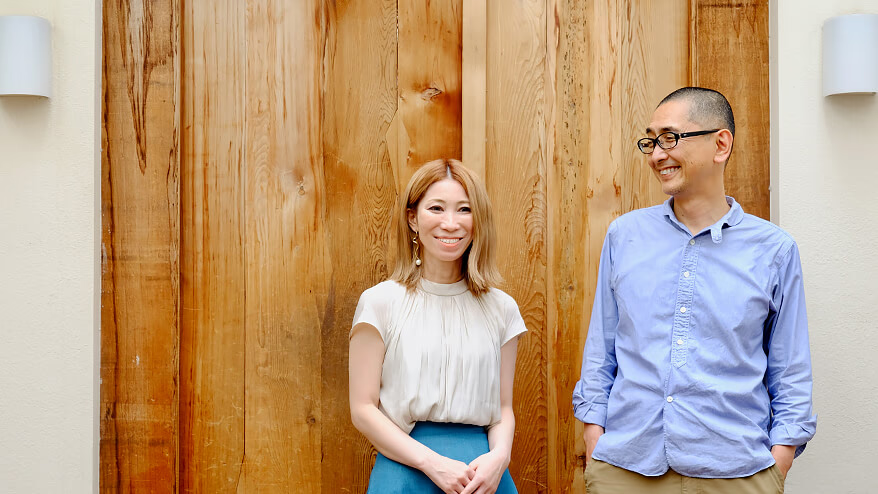Hello, my name is Sugimoto and I am a writer living in Kyoto.
At the Monosasu website, I am in charge of sections such as " Freedom and Responsibility: Everyone's Systems and Working Styles Laboratory ."
Designer Takita-san, who appeared in "Freedom and Responsibility," said that the interview made him think, "I want to seriously reconsider my own way of being and my interests," and that he also discussed this in his one-on-one meeting with Manabe-san (CDO of Monosus).
Then, Mr. Manabe said,
"If you only think about it yourself, you will try to come up with an answer based on what you can see now. Why not take this opportunity to broaden your horizons and explore what you want to become?"
He introduced me to Yoshiaki Nishimura.
Nishimura has worked in a variety of design fields, including space, products, web and paper. In addition, he conducts interviews, writes articles and books, hosts various workshops, and in recent years has been involved in urban development in Kamiyama Town, Tokushima.
Perhaps learning about ways of being that cannot be contained within one of the titles available in the world could provide Takita with some hints, so we held a meeting to "have Takita and Nishimura listen to what they have to say."
By the way, what kind of work are you doing now, Mr. Nishimura?
Takita: The more I read your books and interviews, the more I'm surprised at the wide range of work you do. What do you personally feel is the part of your job right now?
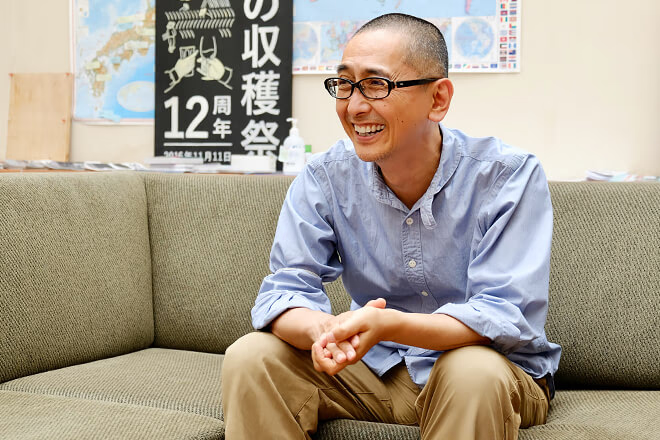
Nishimura Yoshiaki
Born in Tokyo in 1964. Representative of Living World and Planning Director. Author of "Creating Your Own Job." Works in three major areas: creating, writing, and teaching. In 2014, he moved to Kamiyama Town, Tokushima Prefecture, and started living in multiple locations. In April 2016, he became involved in the town as a founding member of the general incorporated association "Kamiyama Tsunagu Public Corporation." His latest book is "Let's Go on an Adventure Together" (Kobundo, 2018).
Nishimura: I often find myself wondering, "What am I doing?" (laughs). Well, I have a few things inside me. They're traits I have... In my case, I think that even if I leave it alone, I've been doing the things I do for a long time. Since I was little.
I remember it vividly, when I was in my third year of high school, during a break I went to the blackboard at the back of the classroom and wrote "Nishimura Project" in chalk. I didn't really understand the word "project," but that's what it felt like. I guess it's just my nature to think about or come up with something and propose it to the people around me .
Takita: You weren't thinking of doing something, you just wrote "Nishimura Planning"?
Nishimura: I wrote it (laughs).
Sugimoto: Is "Nishimura" written in kanji, or is it written in katakana and so is it "Nishimura Planning"?
Nishimura: To be precise, I was called "Nissimu," so I wrote "Nissimu Planning" in katakana. It sounds like a store name. I guess that's what it was like.
Sugimoto: When you come up with something and propose it to someone, do you say, "Oh, I can't help it. I thought of it," or do you get excited and say, "This is definitely a great idea!"? What's it like?
Nishimura: I don't know, but coming up with ideas or thinking "what if I try this?" is something that happens quite naturally to me. It's like I have to do it, I have to tell people about it. Well, I guess I'm excited about it too.
Sugimoto: At that moment, do you get excited and think, "Yes, it's here!", or do you just say calmly, "Yes, there it is"?
Nishimura: For me, ideas aren't something that just pop up and make me go "Eureka!". They're a little more calm. They pop out more naturally, and then I examine them from a number of angles, wondering "Is this really right?"
Perhaps the clue lies in the time spent as a child?
Nishimura: In my case, when I look back at my past, I can see things that I'm naturally born with and that come out naturally . If you don't mind, Takita-san, please tell me about it.
Takita: Actually, I've had a chronic illness since I was two years old, and I have almost no memory of being obsessed with anything as a child. My symptoms were at their worst when I was in junior high school, and I was bedridden for a time, so I didn't attend classes at school or spend much time with friends. It wasn't until I entered high school that I found a treatment that suited me and was finally able to return to my daily life.
Nishimura: It was that long.
Takita: Yes. So I'd always been with my family, and it wasn't until I entered high school that I experienced communicating with a lot of people. I was behind in both studies and sports, and had very few hobbies and friendships, which made me feel inferior, and I looked completely different from everyone else. I didn't know what to do to get closer to "everyone" who lived normal lives, so there was a time when I felt bad about communicating.
At that time, I would go to the bookstore almost every day after school and browse through psychology books about communication. Looking back, I think that rather than whether I became better at communication or not, I really enjoyed the time I spent reading those books.
Nishimura: It was fun.
Takita: Yes. I think it was an experience that made me really enjoy learning communication after birth, and it also made me enjoy looking at people from that perspective.

Nishimura: So browsing books in bookstores has led to your work.
Takita: Yes, to a certain extent. The most interesting part of my job as a designer was working on UI/UX. I think it connected with my own interest in "understanding the other person's psychological process and communicating with them."
We are interested in creating a comfortable environment for each other.
Takita: For example, when creating a campaign banner, we design it by considering "why did they click but not register?" and "how does it look next to other banners?", and the results are returned as numbers. The process of interpreting those numbers and preparing the next banner feels like a form of communication with invisible customers.
I feel incredibly happy when I feel like I've been able to communicate well with someone, so both at work and in my personal life I like to try out small experiments, thinking "maybe if I do it this way it will work."
Nishimura: I'm interested in people's psychological processes, or how the mind works.
Takita: I think so. I think I'm interested in understanding others so that we can create a comfortable environment for each other .
Nishimura: How uncomfortable does it make you feel when someone says that you're "interested in manipulating people"?
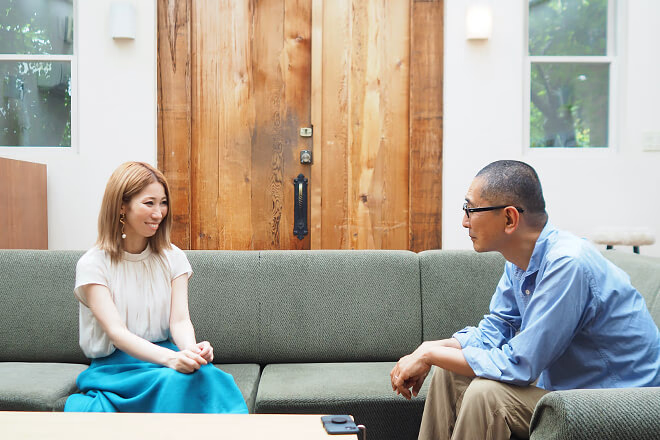
Takita: When I first started designing, I was really interested in how to control things. I'm joking, but when I told people at work that I was studying cognitive psychology, I would say, "I'm studying this because I want to make the whole world go the way I want it to."
Over the past two or three years, I haven't felt that way anymore. I've come to believe that if we build a relationship that makes both of us feel comfortable, things will go well.
I want to understand each person and treat them in a way that suits them.
Nishimura: I see. So it makes the relationship with the person you're with more natural?
Takita: It becomes easier to say things, and there is more chatting. I think there are a lot of hints in chatting. I live off the hints I get from chatting , so I come to the office just to chat.
Nishimura: Chit-chat! That's great (laughs). Is that with your staff? Or maybe with your clients too?
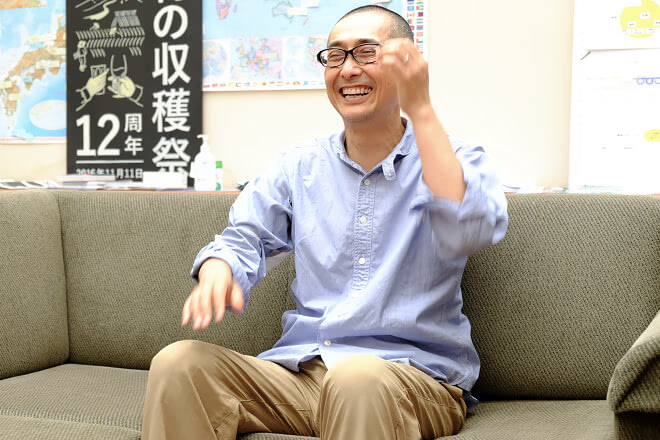
Takita: Mainly my staff. Even when I'm emailing clients, I sometimes add an exclamation mark to try and raise the excitement a little. Even if I'm thinking something all the time, there are times when I write something I didn't bother to write in the text, but I end up writing it down in excitement. Then sometimes I get told things like, "This was really helpful at that time."
Nishimura: I see. When you said before that you wanted to "control the world," it wasn't just a joke, but you also thought it was fun, like a game.
Takita: Control... Wait a moment, let me remember how I felt back then. It may just be a difference in words, but rather than "control," I wanted to do something closer to guidance or navigation. Especially when it came to banners, I was thinking things like, "To go in this direction comfortably."
Nishimura: If we move in that direction, there will be mutual benefit.
Takita: Yes, that's true. But now, rather than targeting a large number of people, I want to deepen my understanding of each individual and treat them in a way that suits them.
Nishimura: I guess it means you want to treat them properly.
Takita: I want to understand people properly and treat them properly. In my case, I think it's because I learned communication after birth, but I have a process for understanding others inside me. Based on that, I want to understand individuals more deeply.
When you grow from a "wizard apprentice" to a "wizard"
Nishimura: I feel like I'm listening to the process of a child becoming an adult. Everyone else acquires communication through experience in an age when there is no language, but Takita had this opportunity after he was a high school student and the language environment was in place. That's why I think he has a strange way of retracing his steps.
Takita: Ah, maybe "tracing it back" fits the description better.
Nishimura: When I heard about when you first became a designer, it seemed like you were having fun as a "wizard's apprentice" and wanted to use magic. I think that was a fun time.
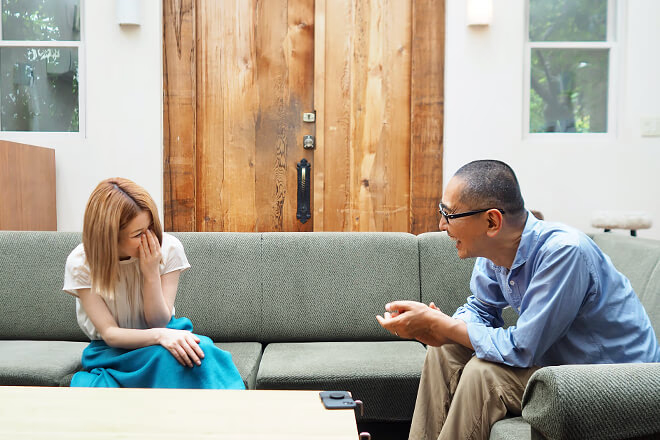
Nishimura: Have you read the social psychology book "Influence: The Psychology of Persuasion" (Robert B. Cialdini, Seishin Shobo) or "The Subliminal Mind: The Future of Latent Views of Humanity" (Chuko Bunko) by cognitive psychologist Shinsuke Shimojo? It reveals the mechanism by which "if you go through this process, you'll believe that you made the decision yourself," and it makes you feel quite distressed, thinking, "Where exactly is our free will?"
However, I think there are many designers and planners who refer to these books and implement designs that work on people's subconscious. Or, there are probably many people around politicians who try to learn from Joseph Goebbels, who was in charge of Nazi propaganda. As long as you are doing it with a clear purpose and intention, it comes down to "what you believe in," but I think there are also people who are simply amused by the "magic."
Takita: So the means become more interesting than the goal.
Nishimura: That was a childish time, like "it's fun to wield the magic I learned." Beyond that, I think that human growth is when your interest shifts from the method itself to "how do I interact with people?", "what kind of relationships can I create?", and "what kind of substance can I obtain?" That's what I felt after hearing that story.
Takita: Yes. At the very least, I think I am growing... Maybe.
◆
As I listened to their stories, I thought back on my own life and wondered, "What is something that you do even if you don't notice it?" I thought, "I guess I've always written something in a notebook before I knew it..."
In the first part, we heard about the process in which Takita grew through his work in design and his interests gradually shifted. In the second part , with the help of Nishimura, Takita begins his "adventure" of putting into words what he is "feeling right now" (to be continued).
